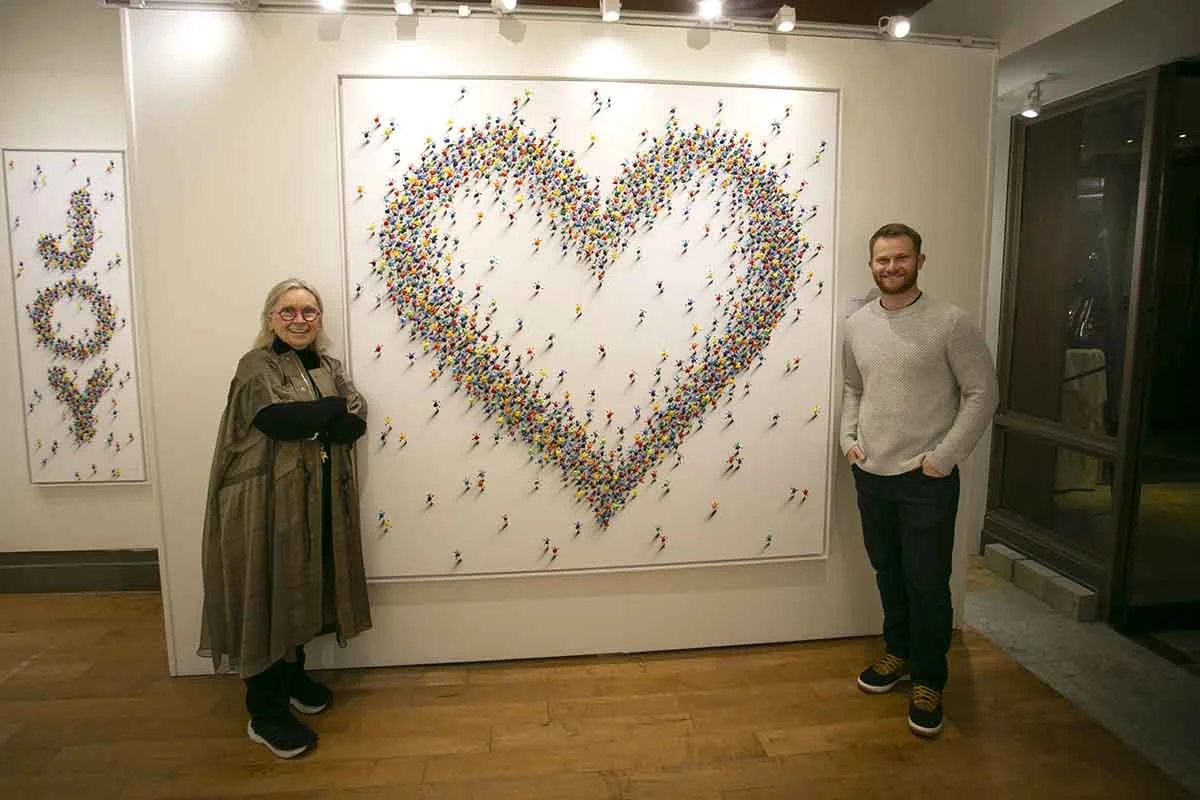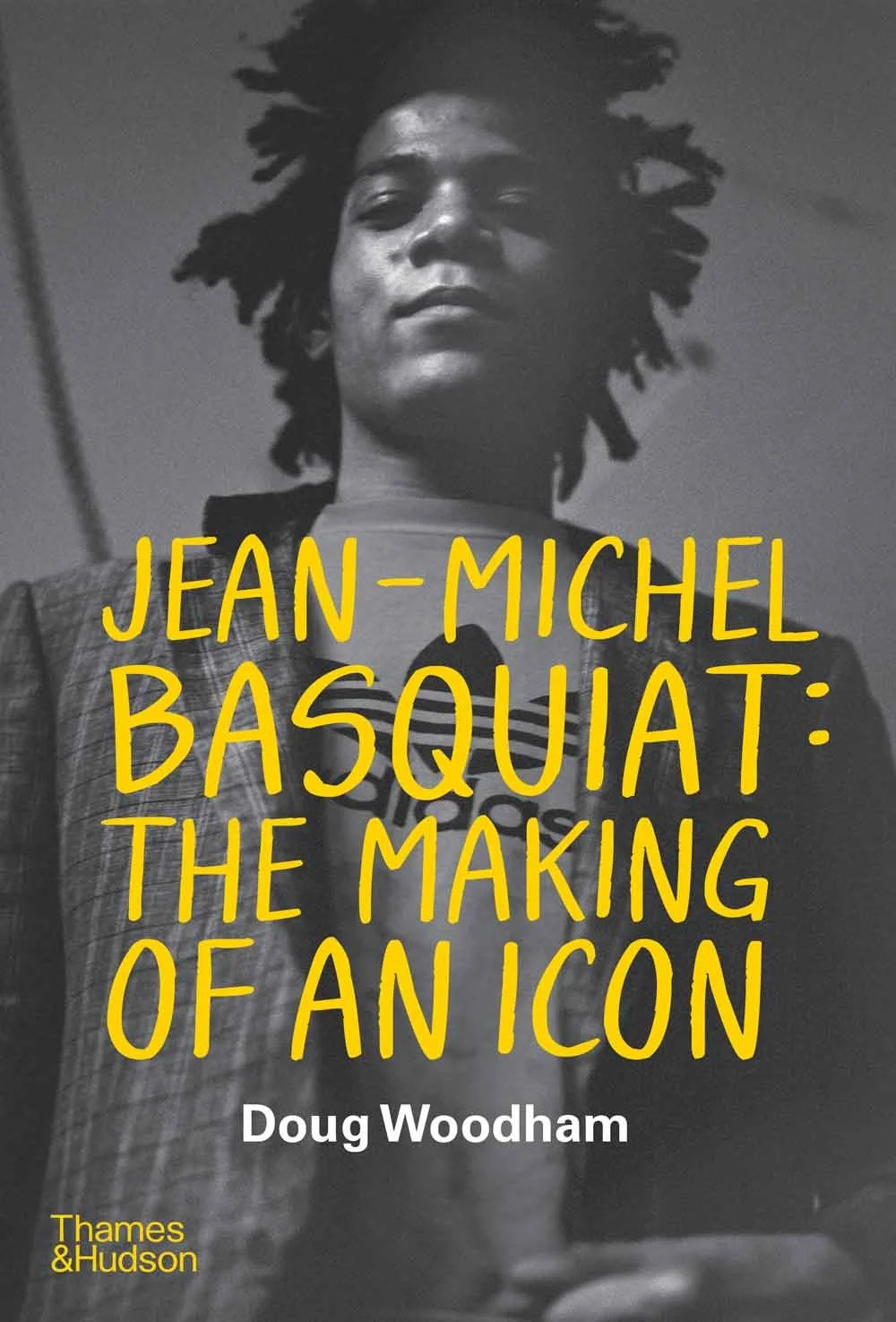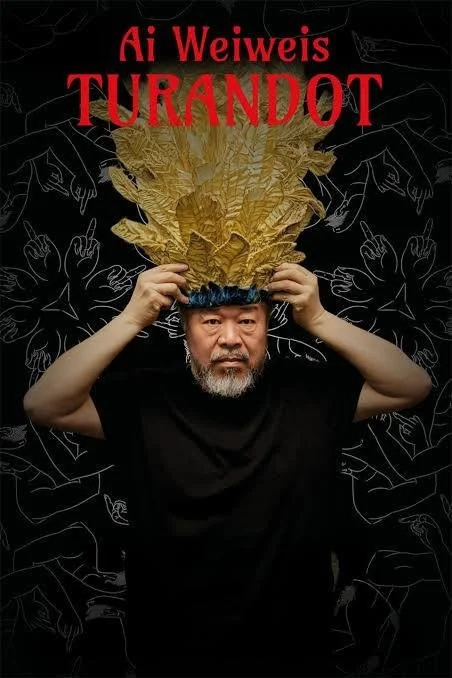A Conversation with Ann Priftis
CEO of Whistler Contemporary Gallery, Whistler, BC
@whistlercontemporarygallery
You had an early fascination with both fine art and graffiti culture. Do you remember a moment when those worlds first came together for you? I think just like many children, I loved to draw, paint and doodle so I think I fell in love with art as an artist first. My parents were graphic designers in the sort of Mad Men era of logo design so I was obsessed with art as a means to sell or advertise products. At the same time I fell in love with the work of early graffiti artists out of New York, specifically the Bronx, like Lee Quinones and FUTURA 2000. The film Wild Style became an inspiration to me and friends who then started hanging out at railroad yards watching the graffiti writers throw up pieces and tag trains. We’d take photos of them in action and compete to spot their tags when we were taking the subways and running around the City.
It’s impossible to measure the importance of the arts on a global scale. Art is a fundamental way for humans to express themselves and share ideas. Art can often be a mechanism to have difficult conversations on important topics that would otherwise be too tricky to navigate. Artistic expression connects cultures, bridges ideological divides and expands viewpoints … artistic expression and democratic access to that expression is essential to human life.
Your schedule sounds anything but routine. What keeps you energized as you move between locations and roles? I love that my job has no typical days! Some days I’m speaking with an artist about potentially joining an Off Piste gallery, many days I’m working on scouting a location for a future gallery space or speaking with a gallery or brand to explore potential partnerships. This past week I was in Sun Valley, ID visiting our gallery team there, in Whistler, BC to attend the Audain Museum Gala and in Seattle visiting one of our artist’s studios to view their new portfolio of work. It’s the variety of tasks and activities implicit in this role that, when coupled with some very ambitious overall goals for the company, make this job incredibly exciting and dynamic. My happy place is that perfect mix of art and business where I can interact with the physical artworks while strategizing about the details around selling it.
Working across multiple locations, how are you thinking about the kinds of artists and exhibitions that best fit each space right now? We’re thrilled to have recently on-boarded the well-known National Geographic photographer, Paul Nicklen, to our Mountain Galleries. As a Canadian, Paul is particularly interested in working with us across our locations in Banff, Jasper, Whistler and within our new partnership at the Fairmont Trenblant. Our team is in the process of developing a more comprehensive strategy to showcase, sell and grow Paul’s fine art. Our exciting challenge is developing a comprehensive plan that will honor Paul’s legacy of creating some of the most famous journalistic images of nature while building awareness for his more artistic photographs. Working with an artist of Paul’s caliber who has entrusted us with his incredible body of work is really a dream partnership.
The work of art most important for me is… I can’t answer this … there are too many artworks for me that hold deep meaning and resonate with me more or less depending on the mood I’m in, where I am in life, etc. The list of works is varied though and include photographs by Marilyn Minter and Nan Goldin, a 1648 oil painting by Nicolas Poussin, a contemporary canvas with neon by Mary Weatherford and several others.
Given your background in art history and appraising, is there a historical artist you’d most want to spend a day with? It may sound cliche but I’d love to spend the day in the studio with Pablo Picasso. Earlier in my career, I had the goal of becoming a Picasso works on paper expert so I spent a ton of time learning everything I could about the artist, his life and that particular part of his practice. What intrigues me most about Picasso is the time in history when he was establishing himself. Paris was a hotbed of ex-pat creativity and his circle included Gertrude Stein, Alice Toklas, encounters with Hemingway, etc. To be a fly on the wall for conversations amongst some of the most creative forces of the 20th century would be a thrill.
How do you approach the process of selecting artists that feel right for each gallery space? Off Piste has 3 distinct gallery brands: the galleries that make up Whistler Contemporary focus on bright, fun, versatile Contemporary work; our gallery in Idaho, Sun Valley Contemporary, has some crossover inventory with Whistler but also includes work with a more mountain town feel; our Mountain Galleries feature Contemporary chalet art - more images of nature, North American animals and mountain landscapes. All galleries carry works in a wide range of mediums including painting, sculpture and photography. We look for artists creating high-quality pieces with a unique perspective and technique. Does the artist have his/her own way of depicting a classic subject like skiers or a still life? Are they using a new technique to photograph their subjects that makes their pieces particularly engaging and intriguing? We want our collectors to be wowed when they see the work hanging in our galleries or available on our sites. Collectors will find a mix of well-known Contemporary artists like Hunt Slonem and Mr. Brainwash alongside newer names like Electric Coffin and Jeff Muhs. We hope this elevated selection of work keeps collectors excited and engaged.
A great thing about living in Seattle… The proximity to nature when living in Seattle is incredible. Coming from the East Coast, I had never been in a city with so many trees and such beautiful flora and fauna. Whenever I’m feeling stuck with an idea or just need a break from looking at a screen, I can step outside and instantly feel refreshed just from the scenery.
Your exhibitions lean into visual impact, but your artists also explore deeper meaning. How do you think about that balance in curating shows? At Off Piste, our galleries are always installed as group exhibitions, intentionally showcasing the widest range of art from our roster of Canadian and international artists. We emphasize the visual impact of the work and curate the space without messaging. However, many of the artists are seeking to convey specific meaning and emotion through their work. We focus on educating the client on artists, best practices in art collecting and the art market. We know that through this education, the client becomes more connected with the art and typically more passionate about the collecting experience. Galleries in general are an incredibly powerful tool for shaping public perception around contemporary issues. As a neutral space for gathering, galleries play a crucial role in bringing people together, in a safe and inclusive environment where sometimes difficult topics can be explored through the beauty of art. Using the artwork as a teaching tool and a mechanism to explore ideas, galleries are a creative space for civil discourse.
How has your background influenced your work? I was incredibly fortunate to attend a high school where art history and art appreciation was offered. This helped set the tone for me to regard art as a viable career path. I have a degree in Art History but it was really the practical experience of working in galleries, at every level from administration to Director that gave me the practical knowledge of running an art business. Becoming a fine art appraiser in 2003, allowed me to add a very useful tool to my skillset - now I could advise on and view works through a value and investment lens. This helped with my credibility in the industry and introduced me to a new group of collectors and institutions. My time at Amazon leading Art X Amazon, helped me better understand how to use data to make big and small shifts in a business model and the importance of on-going ideation and brainstorming. Every step along the career path has provided me with invaluable experience that leads to the next opportunity. If you’re open to and excited about learning, every role is valuable.
You were behind one of the biggest public art events in New York City. What did that project teach you about scaling ambitious creative ideas? My role as Head of Art for the Faberge Big Egg Hunt was challenging on multiple levels. From a purely logistical standpoint, delivering and installing 250 fiberglass eggs throughout Manhattan and the burroughs in 1 night was a massive lift. In the weeks leading up to the install, managing the art production of 250 prominent artists including Jeff Koons, RETNA, DFace, Terry Richardson, Tracy Emin, etc. was a juggling act that I wasn’t sure we’d be able to deliver on. It was through our team’s ability to collaborate and trust each other that we were able to accomplish the largest public art exhibition in New York City’s history. Thinking big has always been one of my super powers and I encourage my team to do the same. I love the energy that comes from new and bold ideas and the way those ideas help ignite creativity in others. It’s a chain reaction that often yields some incredible results even if the final product isn’t what was originally discussed. Once those big ideas are out on the table, it’s then important to analyze the opportunities and weigh them for ROI. Lots of exciting ideas in the art world require major investments of valuable resources including time and money. We want to be sure that our efforts, no matter how big or small, are staying true to our company’s core mission and ultimately yielding results for us and our artists.
What does a successful artist–gallery relationship look like to you, especially when it comes to growth over time and helping them achieve their vision? Off Piste has wonderful relationships with our artists, many of whom have been with us for years. We know that our talented artists are the backbone of our company. Without their vision, commitment and work, we’d be out of business! We view our relationship with artists as a true partnership so we provide meaningful feedback to them as often as we can. The data we collect from our websites, socials and from our walk in clients can be helpful to share with our artists. Which themes and colors are our collectors gravitating towards? What are the common questions a client has when viewing a specific piece? Sharing this information with our artists can help them as they continue to evolve in their career. One of the best ways we can support our artists is by doing our best to ensure they make a living from the sale of their work. To that end, we will often help our artists set pricing for their piece or encourage them to adjust pricing over the course of months and years as they experience increased interest in their work. Artist management and partnership is a long game built on extended trust and collaboration … our artists’ success are our successes.
Programs like your Artist in Residence initiative seem to invite real dialogue. How else are you creating space for connection in your community? Our galleries offer a range of art events throughout the year at each of our locations. One of our most popular events is our AIR - Artist in Residence program where one of our talented artists visits the gallery for 2 days, presents a talk about their work, hosts a Q&A and then a meet and greet. Gallery collectors, guests of our partner hotels as well as the general public are invited and attendance is always strong. The crowd is typically highly engaged in the presentation and it’s a great way to connect the artist and the collector directly … which often doesn’t happen for either party. The in-person connection made at these events heightens appreciation for the work, the artist and the patrons.
You’ve had mentors who shaped how you work and lead. What advice would you offer someone starting out in today’s gallery landscape? My first role in the art world started when I was 18. I worked 40 hours a week at Guarisco Gallery in Washington, DC as an assistant while I attended the University of Maryland about an hour away. The gallery specialized in 19th/20th century oil paintings and bronzes by names like Mary Cassat and John Singer Sargent. Clients of the gallery were well known politicians, celebrities and museums and they expected the highest level of white glove service and knowledge. My boss at that time became an incredible mentor to me. Jane understood that I had no resources (at the time I owned 1 suit that I just kept dry-cleaning and wearing with a different shirt!) and no experience but loved the industry so she did whatever she could to help me. She was generous with her knowledge and kind. Her deep interest in her collectors and the personal relationships she built with each of them became the blueprint for my career. She understood that the client was entrusting her to help them make major acquisitions and advise them on collecting. Trust was absolutely essential and she demonstrated every day how to cultivate that trust and steward those relationships.
Galleries today face many challenges - the steady increase of operational expenses including rent and staff salaries, increased competition for popular artists and pressure to engage in the art fair circuit. Certainly recent developments around international tariffs and trade restrictions have only exacerbated these issues. Now is the time for galleries to work on those artist and collector relationships. Lean into their loyal patron base, stay true to the core value their business brings to the art landscape and really emphasise that in their marketing and sales efforts. In a world with increased competition, galleries need to differentiate themselves in ways that align with their authentic missions and visions. Nothing is more compelling than demonstrated originality, authenticity and hard work.
How are you navigating sustainability within the realities of art shipping, storage, and the gallery business model? We recently took a close look at our logistics operations and decided to focus our attention on increasing sustainability in this area. We invested in a warehouse which allows us to now store original crates that we can re-use (as opposed to building net new crates for shipping work to clients.) We donate scrap materials from our shipping activities to artists to upcycle into their work and we recently reduced the amount of plastic packaging materials we’re using for art shipment. We’ll be sending out an update to our collectors and artists about this on Earth Day this year. It’s becoming increasingly important to collectors that they know the businesses they’re supporting are taking active steps to increase their sustainability efforts. Off Piste does a brisk online business which helps reduce the shipping and installation churn many galleries face. Because of this successful online sales channel, we’ve historically opted out of participating in art fairs. Our gallery locations in resort destinations offer the excitement and fun of a more dynamic setting like an art fair, as opposed to being a stand-alone brick and mortar location.
You’ve been immersed in both tech and traditional art spaces. What role do you see for AI and digital platforms? And what is the importance of human art and handmade creative works over industrialized creative practices? COVID really helped collectors become more comfortable with buying work online. Certainly platforms like Artnet and Artsy existed long before but the dollar threshold collectors were willing to pay through these sites remained low for years. Often, a collector would only buy work online from an artist whose pieces they had seen in person before. That changed dramatically when the art world shut down for 2 years. Artists turned to Instagram to self-promote and many experienced great success doing so. This set the table for artists, galleries and clients to be more comfortable with technology playing a bigger role in the art world. There’s not a day that goes by when I don’t use ChatGPT! I love it for streamlining and summarizing text, helping break through a writer’s block, etc. Our gallery creates visual, scaled mock ups of artwork in client’s homes. As helpful tools and supportive systems, technology in the art world is great. It’s impossible to underscore how important the data we receive from these online activities has helped shape the art world over the past decades. However, we need to be mindful to not replace too much of what we do as humans with tech. There’s powerful feedback from clients that the in-person experience of buying art, the 1:1 phone time they have with their trusted Art Consultants and the ability to attend events with other art enthusiasts, is a crucial part of the collecting experience.


















































































